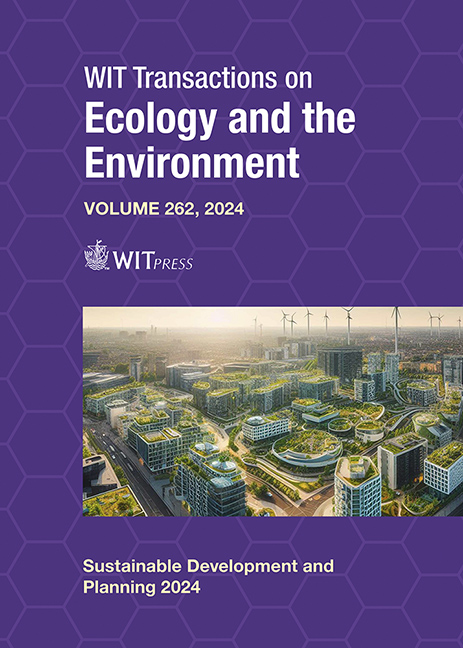THE MATTEOTTI VILLAGE BY GIANCARLO DE CARLO: PARTICIPATORY ARCHITECTURE BEFORE AND AFTER THE MILLENNIALS
Price
Free (open access)
Transaction
Volume
262
Pages
11
Page Range
277 - 287
Published
2024
Paper DOI
10.2495/SDP240231
Copyright
Author(s)
FRANCESCO DEMMA, ALESSIO PATALOCCO, SARA MASSARINI
Abstract
The relationship between city and art is a combination of considerable interest for those who deal with and study the city and urban planning. Just as cities change and evolve rapidly, art also evolves towards participatory and social use. City and art, urban planning and quality of life are the basis of the relaunch of the Matteotti district of Terni. The Matteotti village, built between 1970 and 1974 by the architect Giancarlo De Carlo, constitutes one of the first Italian examples of ‘participatory architecture’, the employees of the Acciai Speciali Terni factory and future inhabitants of the neighbourhood actively collaborated in the design, with the coordination of the sociologist Domenico De Masi and the manager Gian Lupo Osti. The intervention in the Matteotti neighbourhood is still the subject of studies today by university departments, scholars and architecture enthusiasts from all over the world. The relationship between space and society, a theme very dear to architect De Carlo, sees culture and art as a key to understanding and relaunching the territory, in this case the village 50 years after its construction. The Giancarlo De Carlo study centre, a cultural and scientific association founded in 2014, together with two other local associations, through a survey aimed at the current inhabitants of the neighbourhood, thus drawing inspiration from participation, created ‘Abit in Living’, an artistic and cultural event to investigate the profound link between clothing, a symbol of personal identity and living, understood as a physical space that characterises a lived-in portion of territory. The event has a precise vision: to create a dialogue between fashion, design, architecture and society, reflecting on the mutual influence between the way of dressing and the way of experiencing spaces. In this way art can change the residents’ perception of the architecture itself, creating an immersive experience, as a relaunch and revitalisation of the entire village.
Keywords
urban planning, participatory architecture, Giancarlo De Carlo, millennials, generation Z, urban regeneration, resilience, artistic event





